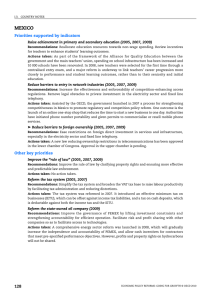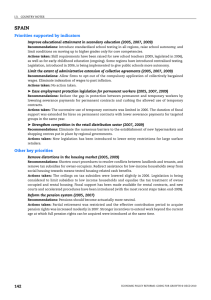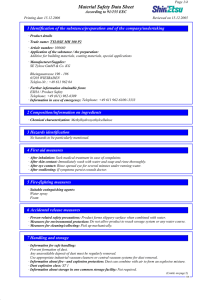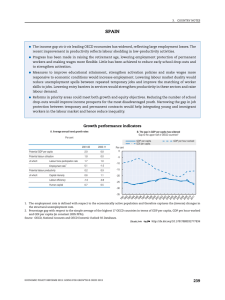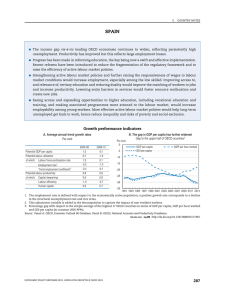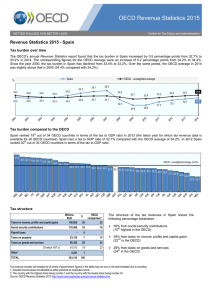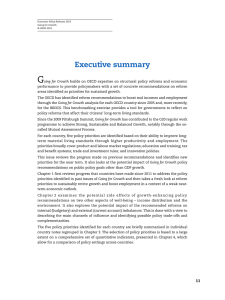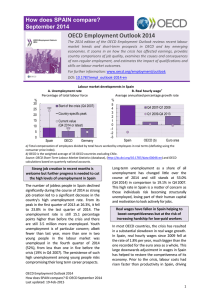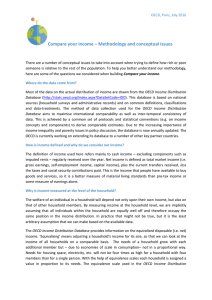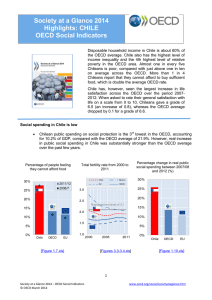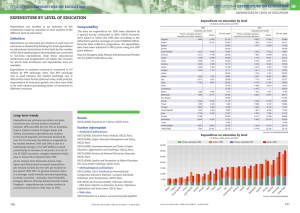Taxation and Employment
Anuncio
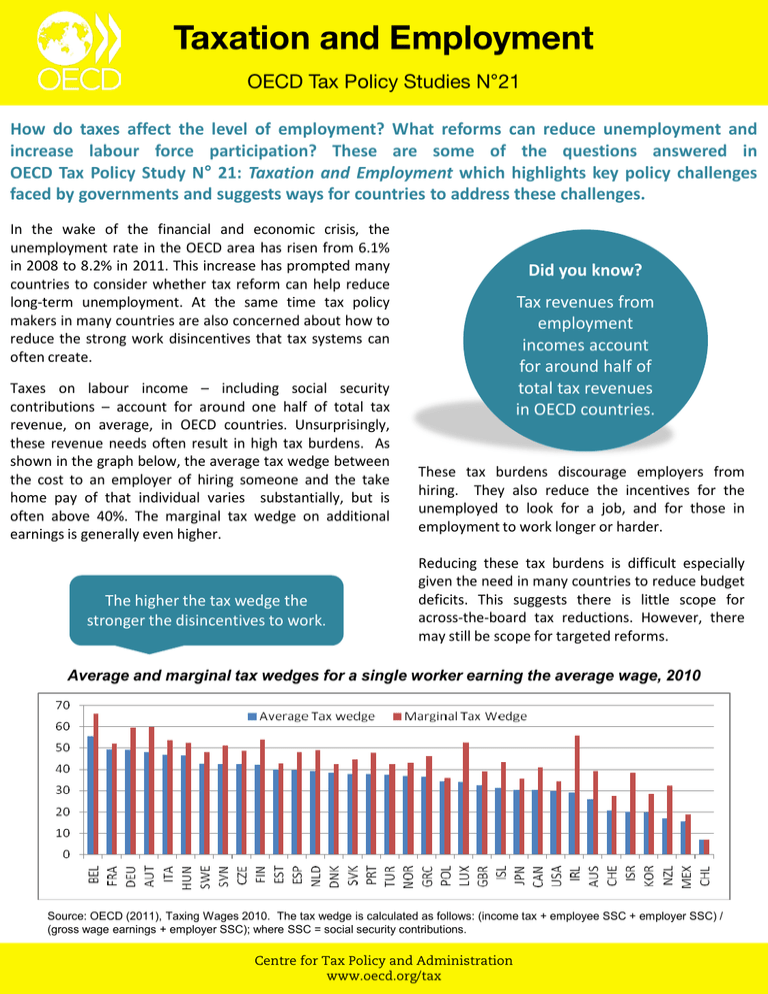
Taxation and Employment OECD Tax Policy Studies N°21 How do taxes affect the level of employment? What reforms can reduce unemployment and increase labour force participation? These are some of the questions answered in OECD Tax Policy Study N° 21: Taxation and Employment which highlights key policy challenges faced by governments and suggests ways for countries to address these challenges. In the wake of the financial and economic crisis, the unemployment rate in the OECD area has risen from 6.1% in 2008 to 8.2% in 2011. This increase has prompted many countries to consider whether tax reform can help reduce long-term unemployment. At the same time tax policy makers in many countries are also concerned about how to reduce the strong work disincentives that tax systems can often create. Taxes on labour income – including social security contributions – account for around one half of total tax revenue, on average, in OECD countries. Unsurprisingly, these revenue needs often result in high tax burdens. As shown in the graph below, the average tax wedge between the cost to an employer of hiring someone and the take home pay of that individual varies substantially, but is often above 40%. The marginal tax wedge on additional earnings is generally even higher. The higher the tax wedge the stronger the disincentives to work. Did you know? Tax revenues from employment incomes account for around half of total tax revenues in OECD countries. These tax burdens discourage employers from hiring. They also reduce the incentives for the unemployed to look for a job, and for those in employment to work longer or harder. Reducing these tax burdens is difficult especially given the need in many countries to reduce budget deficits. This suggests there is little scope for across-the-board tax reductions. However, there may still be scope for targeted reforms. Average and marginal tax wedges for a single worker earning the average wage, 2010 Source: OECD (2011), Taxing Wages 2010. The tax wedge is calculated as follows: (income tax + employee SSC + employer SSC) / (gross wage earnings + employer SSC); where SSC = social security contributions. Centre for Tax Policy and Administration www.oecd.org/tax Taxation and Employment OECD Tax Policy Studies N°21 The report suggests a number of targeted reforms to increase employment. In particular, targeting groups that are highly responsive to tax disincentives is likely to generate the greatest employment gains for a given fiscal cost. In this regard, empirical evidence points towards targeting low-income workers, older workers and second earners (generally women). Targeted reforms also have the potential to reduce unemployment, particularly amongst the low-skilled. As these reform options would generally involve a revenue cost, it would be for countries to decide whether the potential employment gains justified this cost. Potential “targeted” pro-employment tax reforms Tax reforms to increase work incentives: Introducing (or expanding) work-contingent (“in-work”) tax credits targeted at low-income workers can increase work incentives for low-income workers. Careful design is needed though, especially as the withdrawal of these tax credits as income rises can discourage work. Providing age-based tax concessions for older workers rather than pension-specific concessions, and/or reducing social security contribution burdens on older workers will reduce retirement incentives faced by older workers. Moving from family-based to individual-based taxation (at present 11 OECD countries have some form of family-based taxation), and/or reducing or eliminating dependent spouse allowances, will increase second-earner work incentives. Tax reforms to reduce unemployment: Reducing employer social security contributions or payroll taxes for low-skilled youth, long-term unemployed, and older workers will reduce the cost of hiring them to employers, increasing labour demand. OECD Tax Policy Studies Further reading in the same series: www.oecd.org/ctp/taxpolicystudies Related publications: OECD (2011), Taxing Wages 2010 OECD (2011), OECD Employment Outlook 2011 Find our more at www.oecd.org/ctp/tps October 2011, 165 pages ISBN: 9789264120594 Or contact us: Stephen Matthews, Head, Tax Policy and Statistics Division [email protected] Alastair Thomas, Economist, Tax Policy and Statistics Division [email protected] Centre for Tax Policy and Administration www.oecd.org/tax
